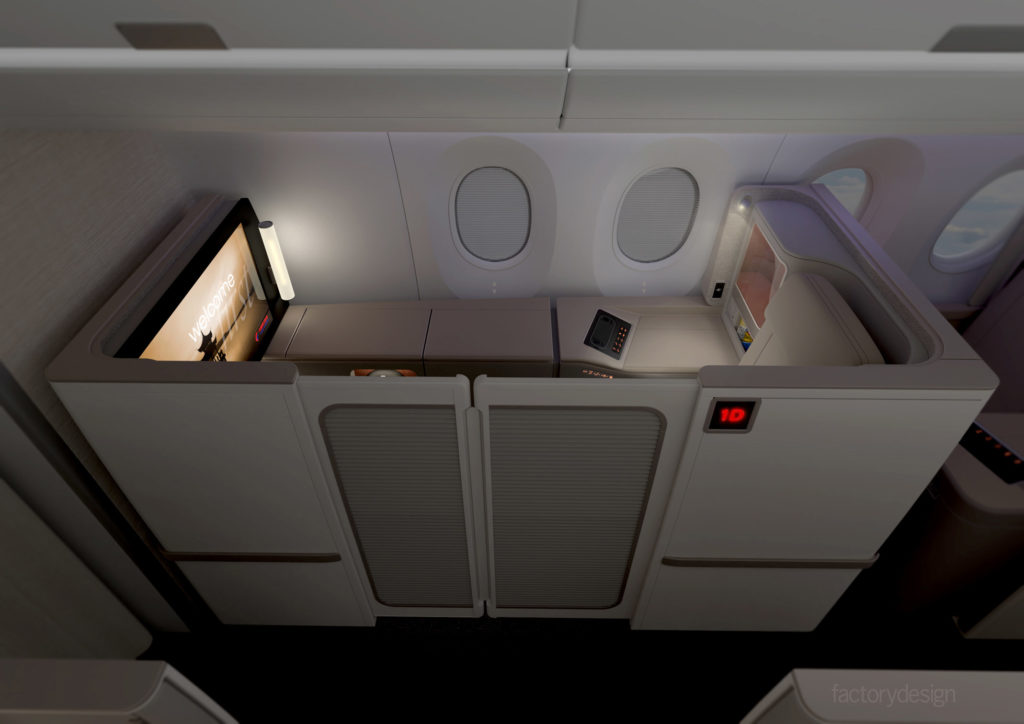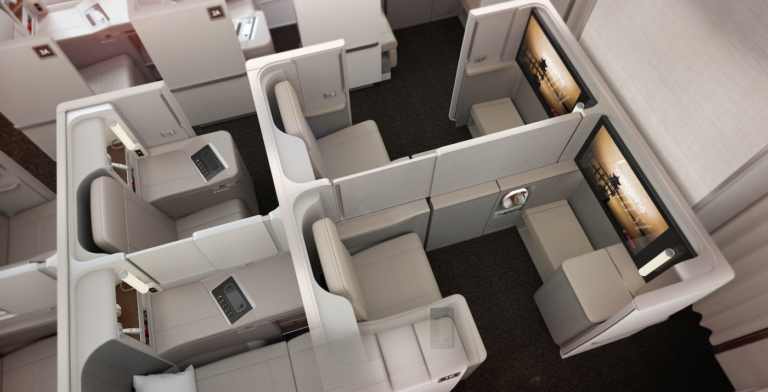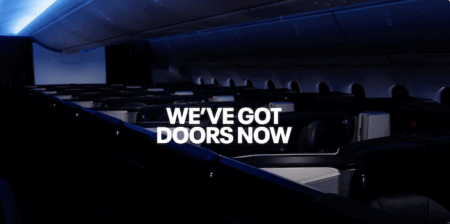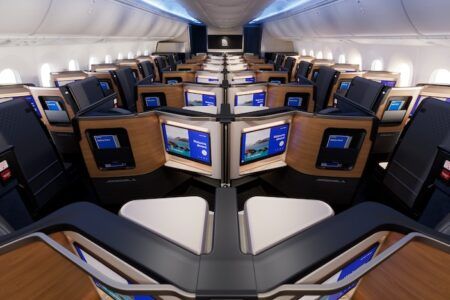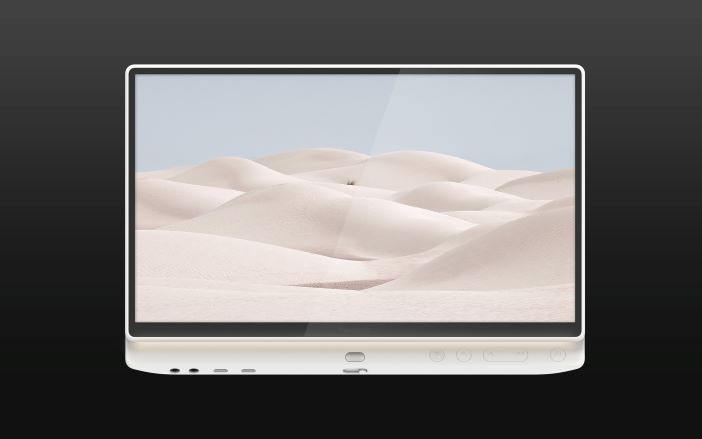Shanghai Airlines, China Eastern’s affiliated carrier, has taken delivery of its 100th aircraft, and it has some fantastic new cabin designs. The aircraft, a Boeing 787-9, is the first of 10 of this type on order with the airline, features a four-class layout, comprising first class, business class, premium economy and economy class – a layout which will also feature in the airline’s forthcoming A350s.
The first and business class seats are of particular interest, being an example of modular thinking, with both being based on Thompson Aero Seating’s Vantage XL platform, differentiated through options and customization. This approach also enables the rear row in first class to overlap and integrate with the front row in business, a LOPA that helps increase cabin density.
The two rows overlap by nominally 35in, according to Factorydesign, creating a nominal space saving throughout the length of the of 38in, depending on required gaps between seat furniture and bulkheads and partitions (which will vary between the B787 and A350).
Using one seating platform has benefits for the airline, but it still requires a lot of work from the design teams, especially since separate teams worked on the two cabin programs, which were run in parallel, requiring and a lot of cross-over and co-operation. The teams in question were Thompson Aero Seating and design agency Factorydesign, which has extensive experience with the Vantage XL platform, having not only helped design the original platform, but also previously customized it for projects with airlines including SAS, Delta and Malaysia Airlines.
So how did the teams take one seating platform and distinguish it between two classes in one cabin? Several functional and visual options were considered, including different suite heights, the use of full- or half-height dividers, curtains, blinds and translucent screens. As you can see from the images, a clear distinction has been created between the adjoining classes by fitting double doors to the first class suites, within which guests enjoy more square footage than in business class (though business class also has a small door for privacy). Another benefit is that the center pair of first class suites (they are arranged 1-2-1 at the front of the cabin) can be converted from two private suites into a larger, shared space that is ideal for couples or colleagues traveling together and also creates an incentive for passengers to select the inboard suites over the often-preferred outboard window suites.

‘Buddy seats’ can also be deployed in these suites to create an open shared space in which four people can sit around a large central table (after the taxi, takeoff and landing process). This shared space is envisaged as a meeting space for business travelers, or as a social space for families and friends wishing to dine, converse, and simply enjoy each others’ company.
Some customers may need a little more incentive to make the extra spend on a first class ticket over the business class fare, so what other benefits have the teams delivered? The suite experience aside, first class features a few inches more pitch than the 44in in business, 32in IFE monitors (18in in business), and 6ft 6in (2.01m) fully flat beds (6ft 4in (1.95m) in business). However, with business class also having the option to lower the divider between the center seats for a more sociable experience, and doors to enclose the seats, business class passengers will not feel they are having a much lesser passenger experience to their suite-dwelling cabin-mates – which is not a bad thing. Both classes of traveller will also enjoy customizable moodlighting, near-field communication sensors, in-seat power, Bluetooth audio connection and headphones.

The differences are clear but not substantial, a situation which could tempt some airlines to create a strong visual differentiation through color, trim and finish. However, following discussions between the airline, Factorydesign, Teague (Boeing’s design partner) and Thompson, a relatively subtle approach to visual differentiation was decided upon through the material selection and finishes. Both classes of seat have bespoke materials and textures, with first class featuring warmer, champagne tones and high-quality nickel finishes, while the outer shells are lighter and the interiors slightly deeper than in the business class seats.

Overall the differences between first and business class are subtle, but should be enough to convince customers looking for a little extra luxury and privacy, especially when further benefits in the wider travel experience are considered, such as enhanced airport experiences and food and beverage offerings. And importantly, business class travelers will not feel they are having a materially inferior experience to others in the cabin.
The new aircraft will initially serve domestic routes between Shanghai and Beijing, Guangzhou and Shenzhen. After that, it will fly between Hongqiao airport and Taipei, Hong Kong, Tokyo and Seoul, or between Pudong airport and Singapore and Melbourne, according to Shanghai Airlines.
